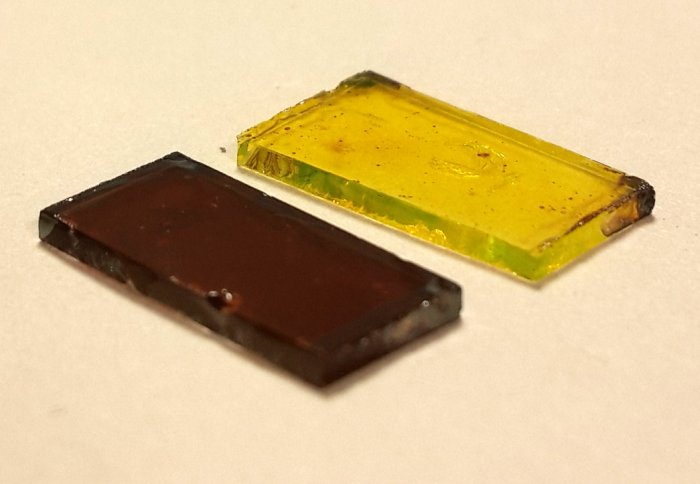27 May 2015
Imperial researchers have determined how oxygen and light degrade promising new solar cells and have proposed an innovative solution.
Solar cells harness energy from the Sun and provide an alternative to non-renewable energy sources like fossil fuels. However, they face challenges from costly manufacturing processes and poor efficiency - the amount of sunlight converted to useable energy.
Light-absorbing materials called organic lead halide perovskites are used in a new type of solar cells that have shown great promise, as they are more flexible and cheaper to manufacture than traditional solar cells constructed of silicon.
The efficiency of perovskite cells has risen rapidly from less than four per cent in 2009 to over 20 per cent today, on par with traditional solar cells. However, perovskite cells degrade rapidly in natural conditions, greatly decreasing their performance in a matter of days. This is one reason they are not currently widely used.
Now, in research published today in Angewandte Chemie, scientists have discovered why the cells degrade so quickly, and have suggested a mechanism for slowing the decline. Until now, researchers believed that water played a dominant role in breaking down the cells, but Dr Saif Haque and colleagues from the Department of Chemistry at Imperial College London have discovered that cells degrade even in dry air by the action of oxygen and light.
“It was thought that water was the only problem, but we have shown that there is another way these cells break down. Knowing the mechanism will help us overcome a major stumbling block for this exciting new technology,” said Dr Haque.
Long-term stability
When excited by light, the perovskite layer releases electrons. These then react with free oxygen in the air, forming highly reactive ‘superoxides’, which in turn attack the perovskite layer and break it down. A by-product of this reaction is water, which further speeds up the degradation.
The researchers’ proposed solution is adding a layer of material that quickly extracts the electrons released by the perovskite layer before they can react with the oxygen. The team are working to determine exactly how this intervention affects the long-term stability of the cells, but early tests have shown that adding a layer of titanium oxide with a large surface area significantly reduces the amount of superoxide formed.
Another way out of the problem would be replacing the organic cation component of the perovskite layer with a less reactive material that is not as prone to attack by superoxides.
Although this discovery could solve the perovskite cells’ stability problem, they still face a barrier to wider use as they contain lead, which can pose a toxic threat to the environment.
-
'The Role of Oxygen in the Degradation of Methylammonium Lead Trihalide Perovskite Photoactive Layers' by Aristidou et al. is published in Angewandte Chemie.















